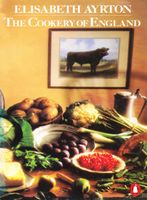🔥 Try our grilling cookbooks and save 25% on ckbk membership with code BBQ25 🔥
Poultry and Game
Published 1975

The appearance of food is always important, but fashions do change. Today we do not wish to emphasize the fact that the bird we are eating soared in full plumage before it was shot, or swam or strutted, handsome as a lord, before its neck was wrung. Our ancestors thought differently. Indeed they seem to have felt that if a bird was beautiful it must be particularly good to eat. Neither peacock nor swan is really very good: the meat of both is stringy and rather dark, with a slightly coarse flavour which must be masked with high seasoning. Yet both were served at royal banquets because, with skins sewn back over the cooked meat, heads and necks propped up and tails spread, their appearance was splendid indeed. The skinned birds were sometimes roasted whole, in which case the skin was simply laid over the roast, the neck held up by a spike; sometimes they were boned and stuffed with smaller birds and forcemeat and then roasted, which would have made for better eating, and sometimes they were cut up and made into a sort of brawn. In the latter cases the skins were tightly sewn, and the birds, borne in procession into the hall and round the high table, would appear complete. The carver would cut the stitches, lay back the skin and place portions on a serving platter.
In this section
Advertisement
Advertisement


